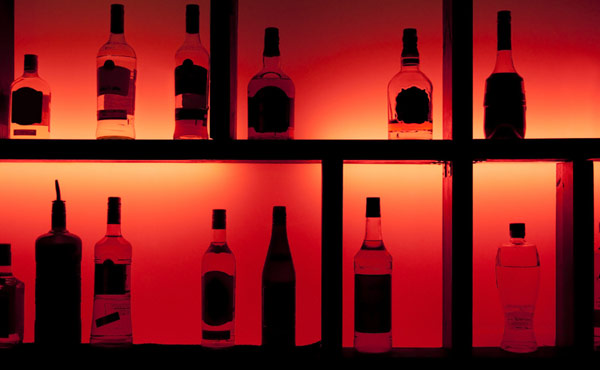
What's the Difference Between Bourbon and Whiskey?

The simple answer is that bourbon is always whiskey, but whiskey is not always bourbon. A strict set of federal trade regulations defines what's what.
Whiskey the American kind, spelled with an "e" is a distilled spirit made from fermented grain and usually aged in an oak barrel. The various types (rye, rye malt, malt, wheat, bourbon and corn) each require different ingredients and distilling processes in accordance with specific alcohol trade regulations, called the Federal Standards of Identity for Distilled Spirits. [Why the Mint Julep Is the Official Drink of the Kentucky Derby]
Bourbon is the most popular type of whiskey in the U.S. It was traditionally distilled in and around present-day Bourbon County, Kentucky. The region takes its name from the Bourbon dynasty, a royal lineage that ruled various European countries intermittently during the past 500 years.
While bourbon whiskey has its roots in Kentucky, and continues to be primarily produced there, it is now manufactured in distilleries all over the United States. Manufacturers must meet the following requirements in order to advertise their whiskey product as "bourbon":
It must be produced in the U.S. from a grain mixture (called "mash") made up of at least 51 percent corn. It must be distilled to a maximum strength of 160 proof, bottled at a strength of at least 80 proof, and barreled for aging at no more than 125 proof. It must be aged in new, charred oak barrels. To qualify as "straight bourbon," the spirits must meet the above requirements as well as being aged for at least two years and containing no added coloring, flavoring or other spirits.
Many bourbon whiskey distilleries in Kentucky advertise their use of unique water filtered by the limestone shelf in Bourbon County; while this feature may add to the allure of Kentucky bourbon whiskey , the federal trade regulations do not stipulate about what water must be used.
Jim Beam, Maker's Mark and Wild Turkey are three of the top selling brands of bourbon whiskey (though Maker's Mark spells their product the Scottish way: "whisky"). Many spirits labeled "Tennessee whiskey" Jack Daniels, for example qualify as bourbons under trade regulations but are not marketed as such.
Sign up for the Live Science daily newsletter now
Get the world’s most fascinating discoveries delivered straight to your inbox.
Production methods of other types of whiskey are also dictated by the Federal Standards of Identity for Distilled Spirits. Rye whiskey, for example, follows all the same regulations for aging and strength as bourbon whiskey, but is made from mash consisting of at least 51 percent rye rather than corn. Jim Beam sells a popular rye whiskey.
- How Much Alcohol Is In My Drink?
- Is Premium Liquor Really Better than the Cheap Stuff?
- Scientific Evidence: Guinness Tastes Better In Ireland
Follow Natalie Wolchover on Twitter @nattyover.
Natalie Wolchover was a staff writer for Live Science from 2010 to 2012 and is currently a senior physics writer and editor for Quanta Magazine. She holds a bachelor's degree in physics from Tufts University and has studied physics at the University of California, Berkeley. Along with the staff of Quanta, Wolchover won the 2022 Pulitzer Prize for explanatory writing for her work on the building of the James Webb Space Telescope. Her work has also appeared in the The Best American Science and Nature Writing and The Best Writing on Mathematics, Nature, The New Yorker and Popular Science. She was the 2016 winner of the Evert Clark/Seth Payne Award, an annual prize for young science journalists, as well as the winner of the 2017 Science Communication Award for the American Institute of Physics.











